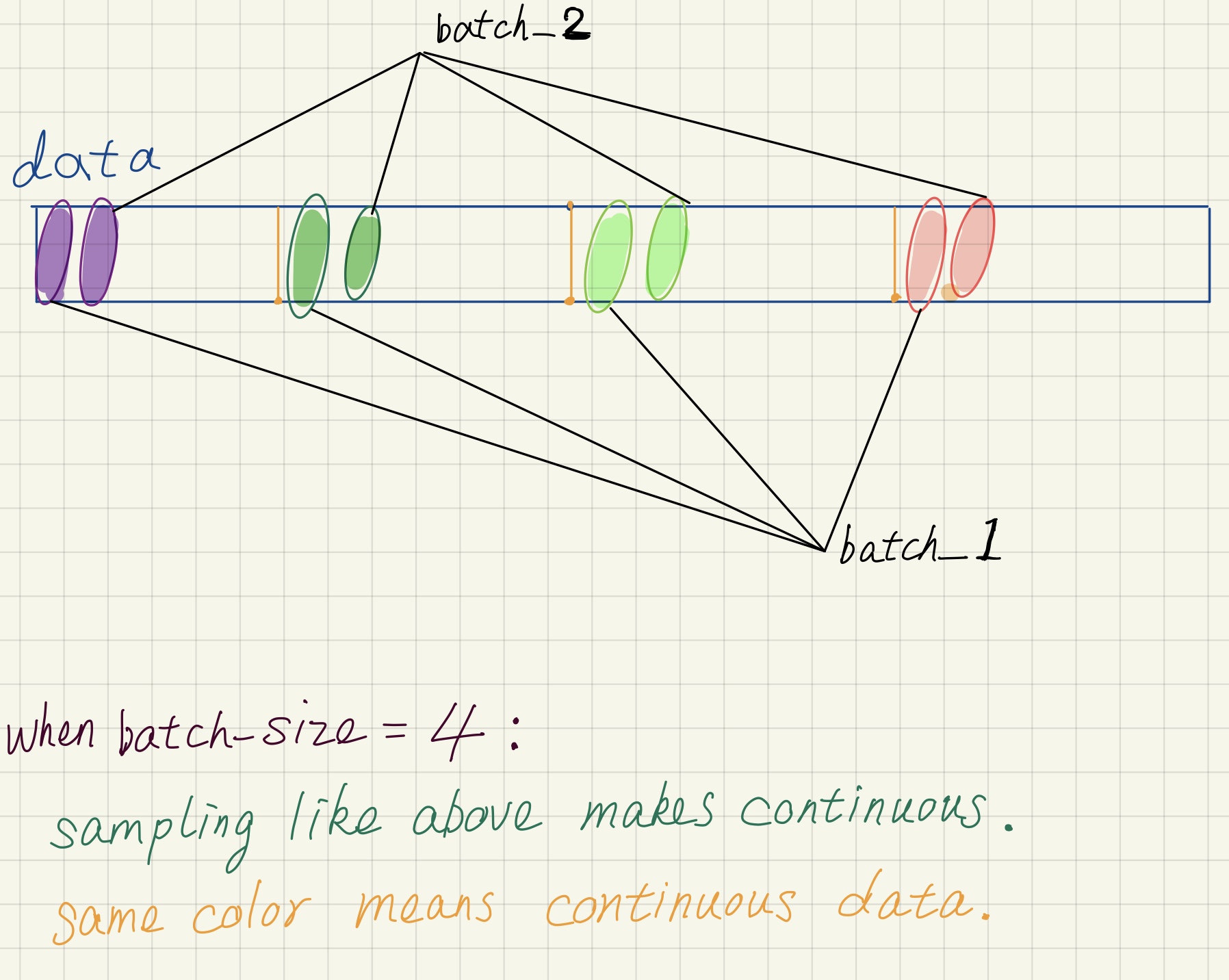[1]LSTM for Punctuation Restoration in Speech Transcripts
@inproceedings{tilk2015,
author = {Ottokar Tilk and Tanel Alum{\"a}e},
title = {{LSTM} for Punctuation Restoration in Speech Transcripts},
booktitle = {Interspeech 2015},
year = {2015},
address = {Dresden, Germany}
}- Goodnote
- python3.6
- pytorch1.0
-
Training
1. In windows: executestart run.batin the cmd in this dir.2. In linux: execute./run.shin bash in this dir. (your needschmodto giveexecute right)> or(deprecated)- In windows CMD: execute
python punctuator.py -tr > ./log/yourLOgName &at root dir of this projct. - In linux bash: execute
python punctuator.py -tr > ./log/yourLogName &at root dir of this projct.
- In windows CMD: execute
-
Inference
- In windows CMD: execute
python punctuator.py -t > ./log/yourLOgName &at root dir of this projct. - In linux bash: execute
python punctuator.py -t > ./log/yourLogName &at root dir of this projct.
- In windows CMD: execute
- Chinese Book 《平凡的世界》.
- Chinese ancient Poetry. (Different word segmentation method makes very different result)
---------------------en_version-------------------------
In general, a DNN system is built with the help of framework like tensorflow, pytorch or MXnet. I choose pytorch for it's simplicity.
Most of DNN systems have 2 main module:
- Training module
- Inference module
As below, a Training module consists 4 parts:
- data processing part
- data inputing part
- net structure building part
- net training part
Among all of 4 parts, we can build Net structue later, because we can build it easily in some general pattern.
As a beginner, we should concentrate more on data processing and data inputing part. Modern machine algorithm is useless without data. No data, No Magic.
Make a assumption:
- No data: We can't get anything with DNN.
- Data was changed by accident: Sorry, our training has gone far away from truth.
- We can't transform data to the form what we need(trust me, there's such kind of needs): Sorry, we also can't start our training.
Always be careful about your data. There's no Out of the box data for your own needs.
Pocessing:
- Remove inrelative word.
- Remove inrelative symbol.
When input data to the Net, pytorch demands more uniformed data form. Pytorch supply a DataSet class for pack the data from raw. A Dataloader is supplied for customizing the sampling of dataset.
-
Above is all for the follow needs:
- Determining input sequence length: LSTM require a input sequence. it process a long sequence data and make use of the relation between continuous words.
- Determining batch division: DNN use batch to speed up the training. A batch is several sequences data stacked into a matrix, so DNN can output several results once. But there is problem in LSTM, We more need 2 sequences which are processed continuously to be continuous in data. In this way the relation can be transmit to more later LSTM process.
-
For demands above, we are customizing the
DataSetandDataloaderclass:- When customizing a
DataSet, we divide the data into sequences with length as 100(or whatever). This can be customized in__init__()ofDataSet - When customizing
Dataloader, we mainly change the sampling method to make the sequence be continuous(but if no batch,Dataloadercan supply a simple waysampler=SeqBatchSamplerto make continuous). What we need is to customizesamplerclass's__iter__(), doing the sampling like what happened in pic below.It will finally make the training to use continuous data.(This can be found inSeqSampler.py)
- When customizing a
Net training consists some techniques:
- Choosing loss function: By choosing a loss function, net can correctly backpropagating.
- Choosing the gradient optimizer.
- Choosing file path to save checkpoint and model.
A inference module should consist of 4 parts:
- Data processing
- Data Loader
- Model Loading
- Inference with loaded Model
Methods are identical to section 1.1.
- Data inputing needs inheriting the
Datasetclass. Then modifying it to standardizing the data from section 2.1. - After
Dataset's processing about raw data, we let a sequence unit be the input of Net.
Note: Unlike training a Net, now we just input only 1 seq into the Net instead of a batch_size of seqs. But pytorch forces you to indicate the batch_size of the only 1 seq explicitly. Please Use np.reshape(id_seq, (1, -1)). More details are in file ./inference/inference.py.
Loading a model can be done by using a overloaded class method load_model() of nn.module.
- After using
torch.loadto load the model information. - We
load_modelthe extraction of embedding_size, hidden_size, num_layers, num_class and state_dict.
Inputing the Dataset to the loaded model. Then inference start.
-----------------------------------------zh_version-------------------------
DNN系统的简单搭建需要依赖深度学习框架进行,pytorch是一个非常好的选择,使用的逻辑比较简单易懂。
通常DNN系统包括两个大部分:
- 训练模块
- 推理模块
一个DNN模型的训练模块的构建应当包括几个部分:
- 数据预处理模块
- 数据输入模块
- 网络模型编写
- train代码
其中网络模型和train的代码的构建是较为模式化的,不需要投入过量的精力。
我们需要对数据的处理和输入加以重视,数据于模型如同燃料于汽车,这一点在自然语言处理中尤甚。
我们做如下假设:
- 数据预处理中,数据被篡改
- 数据无法被处理成我们需要的格式
以上两种假设,一个导致模型脱离现实,另一个则使得训练根本无法开始,如同无米之炊。
即使你找到了开源的规范化数据集,你也会发现,数据集仍旧需要进行处理再进入你自己的DNN系统
预处理:
- 去除无关文字、标题
- 去除无关符号
数据输入网络时,需要被组织成相对于pytorch来说规范的数据格式,pytorch提供了Dataset模块对于数据进行打包、提供了Dataloader对打包好的数据进行加载使用。
-
针对LSTM(数据前后强依赖)模型的输入会有如下需求:
- 确定序列长度:LSTM的输入是一个词序列,我们需要确定一次序列的长度
- 确定batch划分:为加速训练效率,DNN网络的输入通常以batch进行训练,同一神经单元同时对batch上的所有单个数据进行处理。数据输入的shape(batch_size, 序列长度),最后网络输出的是batch_size个结果。不同于一般DNN的数据集batch随机划分,针对于处理序列数据的LSTM,各个batch间需要保持数据连续性(batch内部),只有这样batch间才能传递文本的连续信息。
-
通过对于Dataset,Dataloader进行定制,我们可以满足对数据的需求:
- 自定义Dataset类的数据初始要确定好输入数据的句子序列长度,假设想变为100,通过定制__init__()函数,可以定制数据从文件读取后地形状,改为(-1, 100)
- 自定义Sampler对数据抽样然后根据batch_size确定如何通过定制采样函数,完成连续抽样和随机抽样。(参考repo:pytorch_punctuation的代码,它对于batch的采样,几乎等于随机采样。因为当batch大于1时,将两个连续的句子作为一个batch,各batch间数据断开$batch_size-1$的距离,训练时失去了相邻两句话之间的信息传递!!!!!)
- batchSampler和其他Sampler类都继承了sampler类。更改__iter__()函数,将返回用于确定从dataset中getitem()的index列表迭代器。index被用来调用Dataset的__getitem__()获取对应数据。
- 选择损失函数Loss
- 选择梯度计算优化器,Adam
- 选择check-point路径
- 记录最佳损失Loss
定制train代码,选择mini-batch反向传递策略,还有epoch反向传递更新一次的策略???
一个DNN模型的推理模块应当包括几个部分:
- 数据预处理模块
- 数据输入模块
- 载入网络模型
- 使用网络模型对输入数据进行推理
数据预处理模块和section 1.1中的过程相同。
-
数据输入pytorch网络,需要继承
Dataset类并进行改造后,对预处理好的数据进行规范化。 -
通过类似section1.2的
Dataset构造方式,我们可以得到标准化的数据集,再将标准化的数据集一个一个序列地送进网络。
需要注意的是:和训练网络时不同,我们一次只推理一个单元的文字。在从Dataset取出一个序列后,需要np.reshape(id_seq, (1, -1))将序列改为batch_size为1的shape。
网络模型的载入,是通过重载nn.module自身的类方法load_model实现的。
- 使用
torch.load载入保存好的model后, - 提取vocab_size、embedding_size、hidden_size、num_layers、num_class、state_dict等参数,恢复模型。
将数据输入由section 2.3得到的网络模型,可以进行推理
